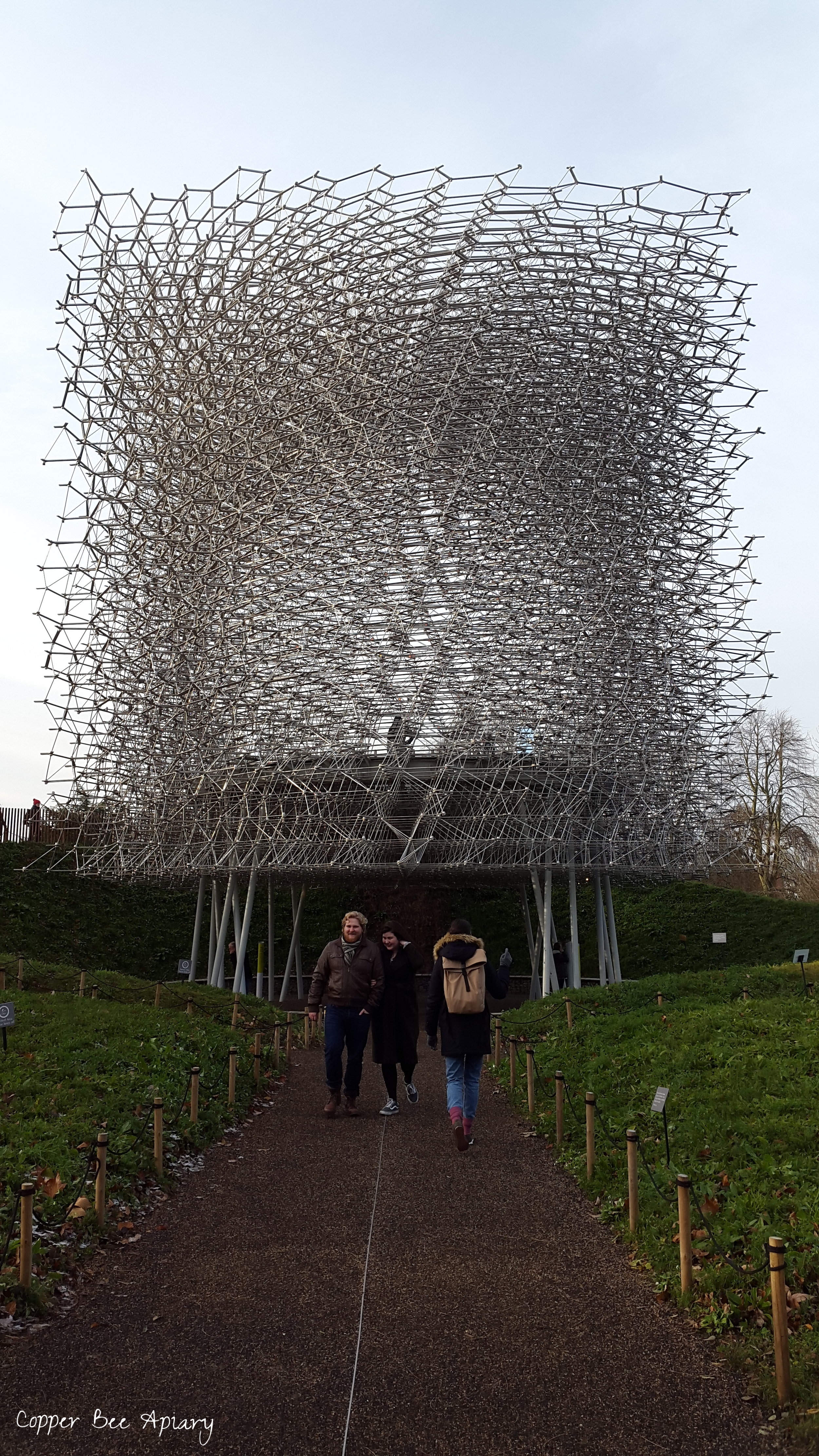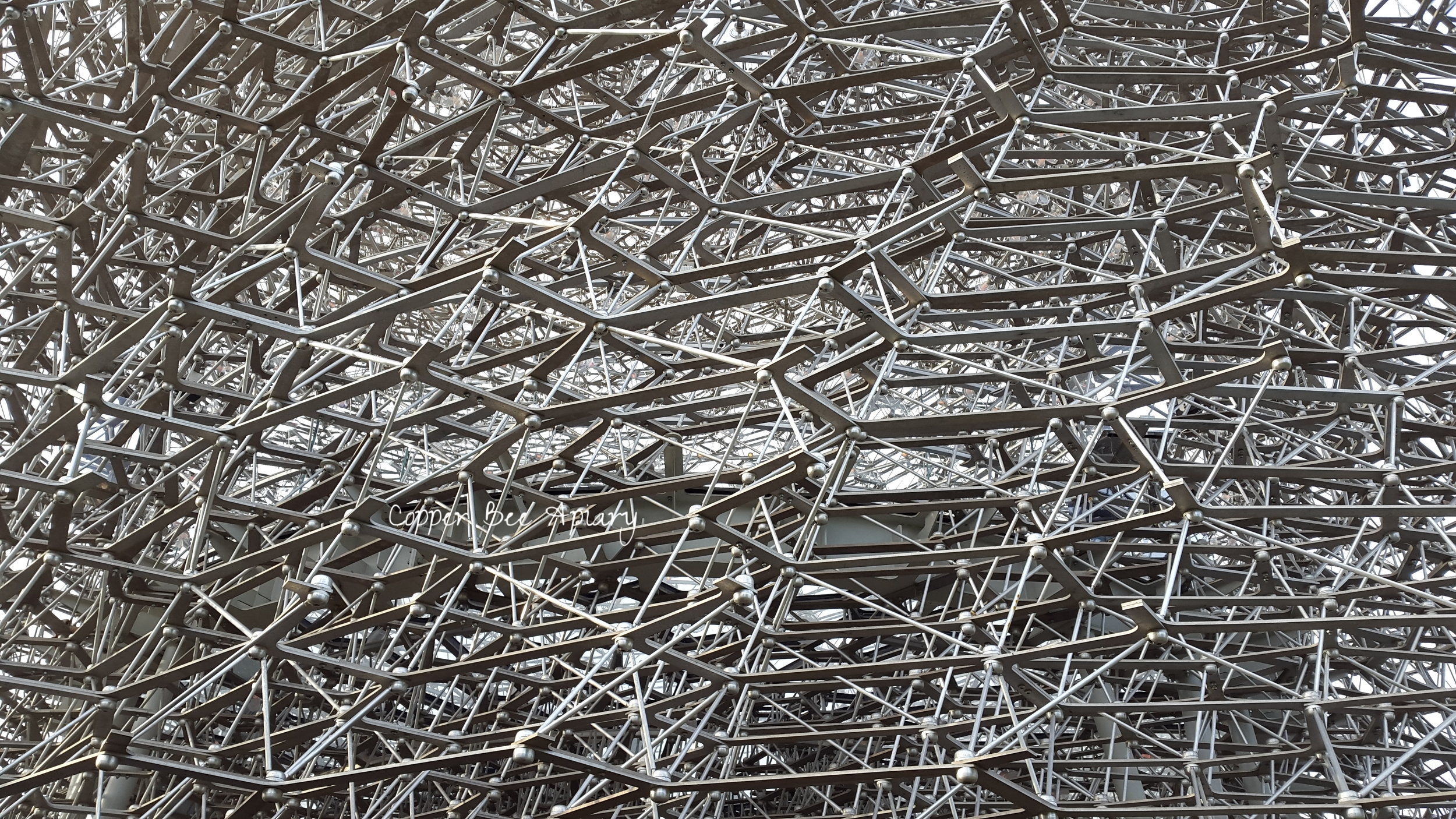The Hive at Kew
I went to Kew Gardens on a mission unrelated to beekeeping, but while hurrying in from the entry gate in an effort to escape the crowds, I looked up and saw this:
Of course, it was Kew's popular exhibit, The Hive.
It's a metal structure that you can walk under and into, covered in lightbulbs that are apparently wired to signals from beehives to indicate the activity of the bees. It is also filled with sound, seemingly a mixture of hive recordings and musical soundtrack. The sound set me on edge, being recognisably hive-like but not a normal hive sound - an auditory uncanny valley[1].
We went in...
It's a clever structure. Looked at from far away, there is likeness to a swarm in the air. Try looking at the pictures of the outside of it from across the room.
The banks around it have notices telling people to keep off because they are planted with wildflowers and I was reassured to note that Kew's wildflower banks shared a similarly rough out-of-season appearance with the "wildflower meadow" at my old house, which was looking distinctly unkempt by the time the new owners took possession:
Kew
Cambridge
See? Mine and Kew gardens virtually indistinguishable, I'm sure you'll agree.
[1] The concept of the uncanny valley suggests that humanoid objects which appear almost, but not exactly, like real human beings elicit uncanny, or strangely familiar, feelings of eeriness and revulsion in observers. The "valley" denotes a dip in the human observer's affinity for the replica, a relation that otherwise increases with the replica's human likeness. Examples can be found in robotics, 3D computer animations, and lifelike dolls among others. (Wikipedia)







